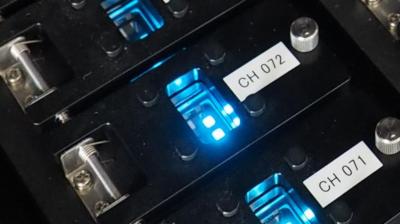Researchers at Osaka University developed an efficient heavy-metal free room-temperature phosphorescence OLED emitter
Researchers from Osaka University developed the best performing heavy-metal-free room-temperature phosphorescence (RTP) OLED emitters.

The researchers say that the new emitter (called SiAz), made entirely out of carbon, hydrogen, nitrogen, and silicon atoms, combines the mechanisms of TADF and RTP to create an efficient emitter system.








